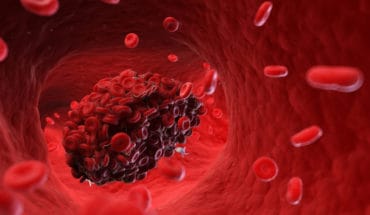Patients with chronic low back pain may benefit from equine facilitated therapy (EFT), a new study from the University of Eastern Finland shows. During a 12-week intervention, the perceived amount of pain decreased, and the ability of daily functioning improved among EFT participants. The findings were published in Frontiers in Veterinary Science.
The study set out to evaluate the impact of EFT on perceived physical performance, level of pain, pain acceptance, depression and anxiety, and quality of life. The study was conducted in Finland, and it involved a total of 22 men and women suffering from low back pain.
The 12-week intervention showed that EFT can be used to improve people’s daily functioning. Statistically significant improvement was observed in domains pertaining to sleep, reaching and bending forward, and standing for a long period of time.
By gradually increasing the exercise load, it was also possible to reduce patients’ perceived amount of pain, increase their participation in social activities, and improve their psychological well-being. During a six-month follow-up, only two of the chronic pain patients returned to the clinic due to pain.
In the follow-up interviews, patients highlighted the perceived physical, psychological and social effects of EFT, showing that the intervention had a comprehensive impact on their rehabilitation.
Statistically significant quantitative improvement was observed for mental health: during the intervention, patients’ social functioning improved and their depression decreased – something that was also highlighted in the interviews: “The created group effect was a positive experience.”
“Chronic back pain is a multidimensional experience involving not only physical pain but also learned thinking patterns and emotional reactions. Traditionally, physical therapy has been recommended for the rehabilitation of patients with chronic pain, as physical exercise has been found to be the most effective way to treat spinal pain. Hippocrates already recommended using equine movement as a form of physical and psychological rehabilitation for people, but the exact reason behind the rehabilitative effect has remained unknown thus far,” says Doctoral Researcher Sanna Mattila-Rautiainen of the University of Eastern Finland.
The gait of a horse encourages the right kind of lumbar movement
Equine-facilitated therapy brought relief to patients with chronic pain who had been incapable for work for several years.
“Patients with chronic pain tend to avoid the sensation of pain that comes from moving the affected part of their body. However, when sitting on a moving horse, a person with low back pain will end up moving to the gait of the horse, which encourages the right kind of lumbar movement,” Mattila-Rautiainen says.
In the intervention, sitting on a horse to 100 walk-like movements per minute was found beneficial:
“The movement felt good – the horse moved me correctly.”
“There is no other way to exercise like this.”
Incorrect movement maintains a vicious circle of pain and affects people’s physical, psychological and social well-being. The compatibility of the patient with the horse’s movements, along with a suitable exercise load, played a key role in the intervention. The exercise load was gradually increased, within the limits of pain. Patients’ opinions were also heard regarding the choice of their horse and equipment.
In Finland, equine-facilitated therapy is a form of medical rehabilitation that has been subsidised by the country’s Social Insurance Institution since 2019. In the rehabilitation of musculoskeletal disorders, however, equine-facilitated therapy is less well established. Mattila-Rautiainen has more than 20 years of experience in using EFT in the rehabilitation of patients with back pain, working in close collaboration with regional social welfare and healthcare authorities in the Kainuu region, Finland.
Mattila-Rautiainen S, Venojärvi M, Rautiainen H and Keski-Valkama A (2023). The impact on physical performance, pain and psychological wellbeing of chronic low back pain patients during 12-weeks of equine-facilitated therapy intervention. Front. Vet. Sci. 10:1085768. https://doi.org/10.3389/fvets.2023.1085768
https://news.cision.com/university-of-eastern-finland/r/equine-facilitated-therapy-improved-the-functioning-of-patients-with-low-back-pain,c3734490
- Gut microbiome could delay onset of type 1 diabetes - 3rd April 2025
- The da Vinci 5 Robot Is Set To Transform Bariatric Care: - 31st March 2025
- Beyond money: the hidden drivers fuelling child food insecurity - 31st March 2025






